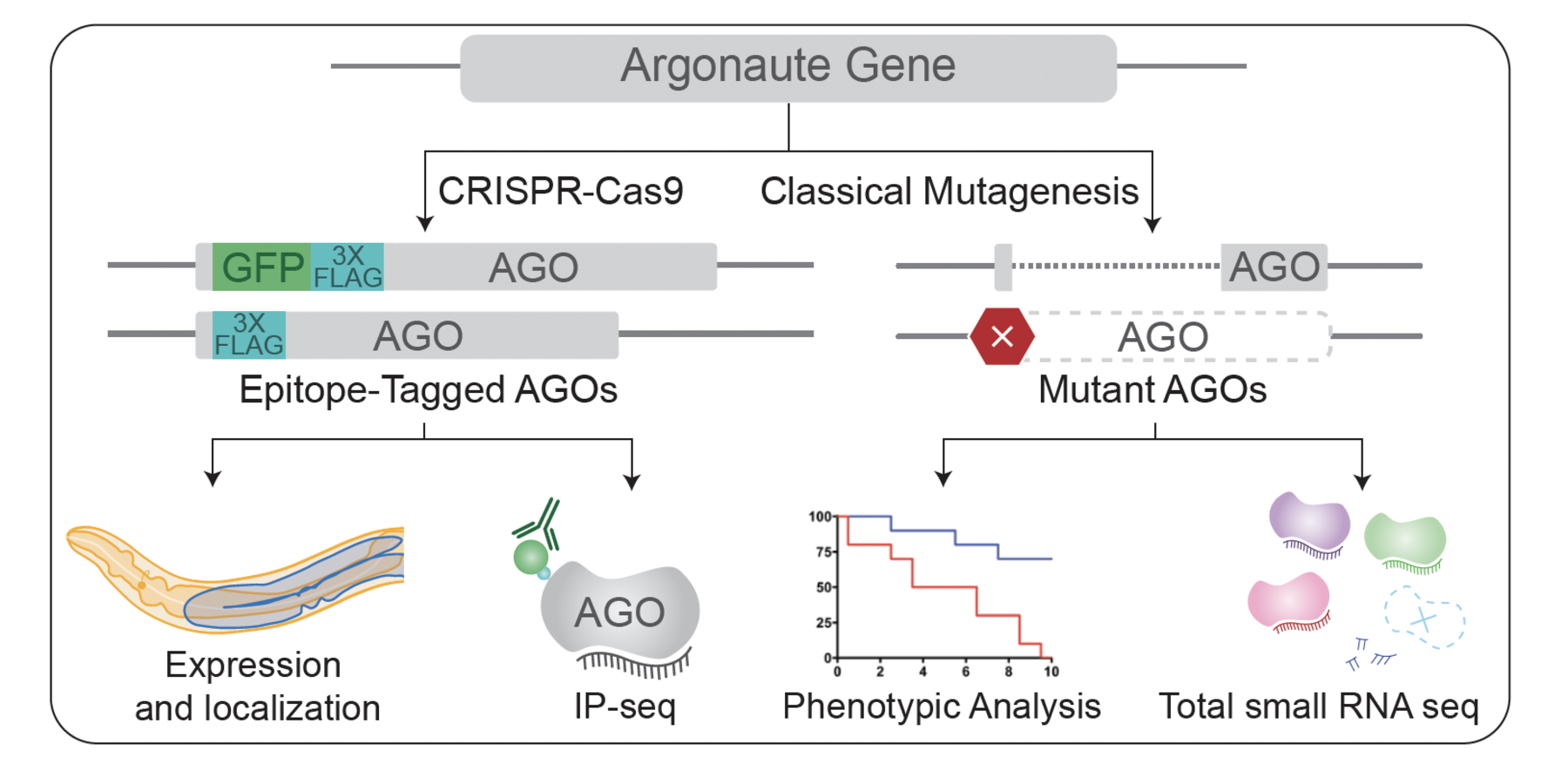Earlier this year, a team from the Claycomb lab, led by former PhD student Dr. Uri Seroussi, and including MoGen graduate students Dr. Amanda Charlesworth, Mathias Renaud, and undergraduate specialist Robert Lao completed a comprehensive examination of all C. elegans small RNA mediated gene regulatory pathways (Seroussi et al., eLife Feb 15, 2023). C. elegans has been a longstanding champion for small RNA research. microRNAs were first identified through genetic screens in the worm. The active molecule in RNA interference (RNAi), double stranded RNA, was uncovered from molecular and genetic approaches in worms (Nobel prize, 2006), and Argonaute proteins were implicated as central components in small RNA pathways via forward genetic screens for RNAi deficient mutants. Argonautes are the core effectors of small RNA mediated gene regulatory pathways, using their small RNA binding partner to guide them to target transcripts, where they can elicit gene silencing by any of several molecular mechanisms. C. elegans has only about 1000 cells, however, worms possess genes encoding 19 Argonaute proteins in their genomes-this is in stark comparison to humans, which are comprised of approximately 30 trillion cells, and express only 8 Argonaute proteins. Over two decades of research in the field have led to the characterization of several Argonautes, but many remained un-studied or understudied. Why does the worm possess so many Argonaute/small RNA pathways-what are they used for? Are all of the Argonautes expressed at the same time and in the same place, or are they different? Do all of the Argonautes bind to the same types of small RNAs, and target similar RNA transcripts or are their different preferences? These were some of the questions that the Claycomb lab team set out to answer in their study.

To tackle these questions, Seroussi used CRISPR-Cas9 genome editing to introduce GFP::3xFLAG tags into each argonaute gene, creating a comprehensive tool kit of >19 strains for studying the Argonautes. The GFP tag allowed them to analyze the expression of each Argonaute throughout development, and enabled them to perform Immunoprecipitation followed by high throughput sequencing of small RNAs associated with each Argonaute. In turn, identifying the small RNA binding partners allowed the team to computationally identify the RNA targets of the small RNAs. From these efforts, the team found that groups of Argonautes are coordinately expressed in certain tissues and cluster together in the types of transcripts that they target (i.e., pseudogenes, transposable elements, protein coding genes, lncRNAs). Many of the Argonautes are expressed in the germline, which led the team to examine fertility in argonaute loss of function mutants. They found that many of the Argonautes, particularly all of those that localize to phase separated RNA granules known as germ granules or the nucleus, were necessary for fertility under the stressful condition of elevated temperature, leading the team to conclude that a major function of these pathways in the germline is to buffer against stressful environmental conditions. Another group of Argonautes are expressed in the intestine, which is a direct interface with the environment via food sources (i.e., bacteria). Surprisingly, loss of function mutants of some (but not all) of these argonautes, led the worms to survive better on pathogenic bacteria or when challenged with a viral infection. Based on the genes targeted by these Argonautes, the team concluded that immune responses are upregulated upon loss of the argonautes, leading to a state that is primed to combat infection. These examples illustrate how studying all of the Argonautes in parallel, and using their characteristic expression patterns and small RNA partners as a guide, can lead to testable hypotheses about functional roles for these pathways in specific tissues. Overall, this study provides a strong and comprehensive resource for the field of small RNA biology, and will spur many future studies regarding the tissue-specific and stess-related functions of Argonaute/small RNA pathways in the Claycomb lab and more broadly. This work has recently been featured in a special issue of eLife on Systems Genetics. You can access the issue here and find the original paper here.